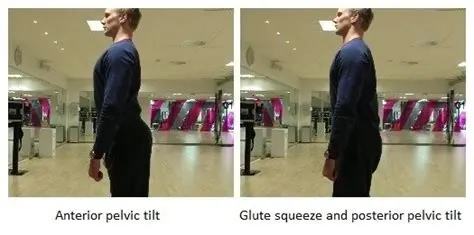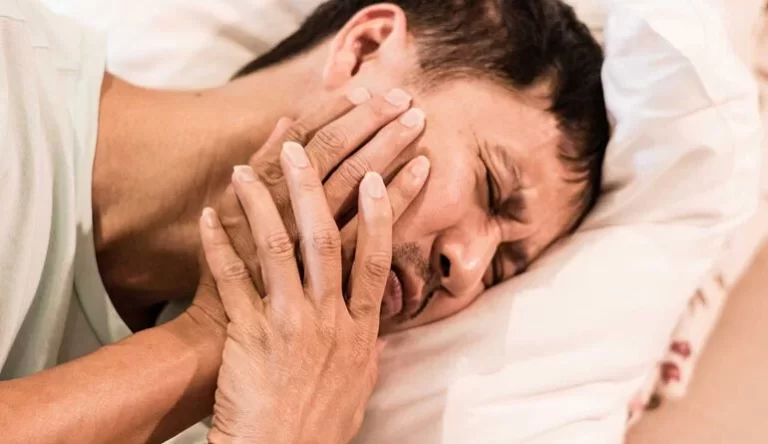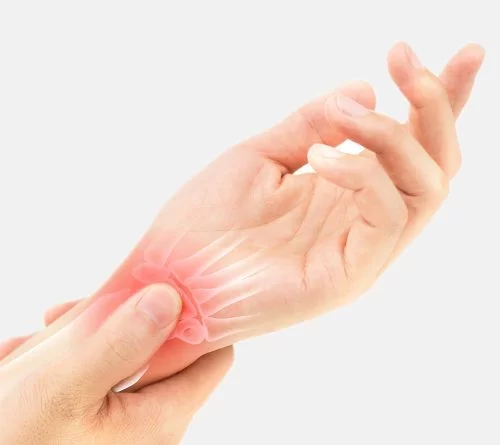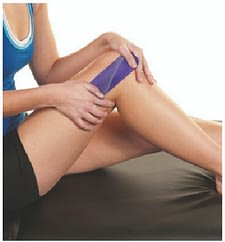Hip Tendonitis
Table of Contents
What is Hip tendonitis?
Hip tendonitis is a condition in which it is painful inflammation or irritation of a tendon in the hip. It is also known as hip flexor tendonitis or tendonitis of the hip.
There may be degeneration in the tendon.
A tendon is a thick cord made up of small fibers that connect muscles to bones in the body. When people have inflamed or irritated tendons, a person may experience pain, tenderness, and mild swelling surrounding the affected joint. A muscle called the iliopsoas muscle flexes the hip, and it is attached to the upper thigh by a tendon. When the muscle gets overused from so much activity, the tendon can get inflamed and causes hip tendonitis.
Hip tendonitis is a condition caused by inflammation of the tendons of the hip flexor muscles, which functions to lift the leg up. Hip tendonitis usually results from overworking of these muscles without sufficient rest to allow them to recover.
Hip tendonitis is more common in athletes who participate in sports like running, bicycling, swimming, or other high-intensity sports.
Anatomy of the hip :
The hip is the largest joint containing the ball and socket in the body. The rounded end of your femur bone (in the thigh) fits into the circular socket in the pelvis bone (hip).
Several muscles work in controlling the movement of the hip joint. These are some of the most important muscles in the body because, without them, a person would not be able to lift the knee and walk.
Some of the muscles include the gluteal muscles, attaching the hip to the buttocks, the iliopsoas muscle attaching the hip to the thigh bone, and the femoris muscle attaching the patella (kneecap) all the way to the hip.
Muscles attach to the bones by thick little pieces of tissue called tendons. When the muscles attached to the hip are flexible and toned, it protects your tendons from irritation and inflammation.
What are the Causes of Hip tendonitis?
Hip tendonitis condition typically occurs when the tendon is under abnormal stress from activity. Hip tendonitis is a degenerative condition that causes disorientation in the tendon fibers. Because the blood supply in the tendons is poor, they are slow to heal.
The hip flexors primarily direct to the iliopsoas muscle, the conjoined unit of the iliacus, psoas major, and psoas minor muscles of the hip. The iliopsoas originates from the pelvis and vertebrae of the lower spine and attaches to the top of the femur bone (thigh bone).
Collectively, the function of the iliopsoas is to bring the hip into flexion—This is the movement of the hip joint that brings the leg closer to the front of the upper body, such as lifting the leg up to step up or jump. It also helps in keeping the torso stable when you are standing with one or both feet on the ground, and it helps to rise from a lying position. Hip tendonitis tends to explode when your tendon is under significant stress from overuse.
Tendonitis can happen because of repetitive movement. Daily activities like walking, running, kicking, or cycling are causes of hip tendonitis and make those activities very painful. These movements put stress on tendons, especially without proper stretching exercises.
Participating in a new sport without training causes muscles to perform harder because they are not prepared to handle the new movements. This stress creates tension in the tendon, which leads to inflammation.
For example, runners are more likely to originate hip pain, including hip tendonitis condition, due to the stress running places on their hips repeatedly. Acrobats, ballet dancers, and anyone else who moves their hips in repetitive and stressful ways also increases risk. This is especially true if you do exercise improperly, e.g. jump directly straight into the most intense part of the workout without properly warming up.
Yet, it does not necessarily have to be an athlete to produce hip tendonitis. If you have an abnormal gait (e.g. if one of the legs is longer than the other), the additional stress on walking style also puts the effort on the hips could lead to tendonitis.
Other causes of hip tendonitis include:
- Sudden progression of exercise without adequate training
- Repetitive stress related to overuse
Risk factors:
Risk factors for developing tendinitis include age, having jobs that involve doing the same motion over and over, doing physical activities with poor form, and taking certain medicines.
Age:
As people get older, their tendons become slightly flexible, which makes them easier to injure.
Work:
Tendinitis is more common in people, such as Athletes, gardeners, and manual laborers, whose jobs involve:
- Repeated motions
- Discomfiting positions
- A lot of overhead reaching
- Shivering
- Pushed movements
Activities:
When doing physical activities, the following may increase the risk of tendinitis:
- A sudden increase in the amount of activity or difficulty of training
- Using Poor equipment, such as old shoes
- Exercise on Hard surfaces, such as concrete or gym floors
- Too little recovery time after the last injury or too little time to get used to the activity again after time off
Poor posture or abnormal body movements
Specific sports:
People who participate in sports activities such as running, cycling, or high kicking are at a higher risk for developing hip tendonitis. Also, sports that need squatting or lifting weights put you at higher risk.
Rapidly increasing training — people who rapidly increase the intensity of exercise and duration of training are at a higher risk for developing hip tendonitis.
Medical condition and medications:
Certain medical conditions, such as diabetes, may increase the risk of tendinitis. Medications that may increase risk include:
- Antibiotics termed fluoroquinolones
- Corticosteroids such as cortisone
- Aromatase inhibitors used to lower breast cancer risk
What are the Symptoms of Hip tendonitis?
The most common symptom of hip tendonitis are as follows:
- Pain such as a dull ache that happens slowly
- Pain decreased as a warm-up but later on again started
- Swelling around hip
- Stiffness in the hip joint in the morning or after a long period of rest
- Tenderness on the patella
- Tightness in the hip flexors
- Discomfort when tightening the muscles in the hip
- Low back pain
- Altered gait and posture
- A “clicking” or “snapping” sound when a person walks and your tendon rubs against the hip bone
- If hip tendonitis remains untreated, the pain can get more destructive over a long time. Hip tendonitis can cause mobility problems, meaning that a person has limited ability to move their hip.
A person might notice that pain gets worse when you perform certain activities. These symptoms do not always stay in the hip only.
Hips are complicated joints that are crucial to the healthy function of the back and lower body. Because of this, any condition that affects the hips may also affect other body parts.
Diagnosis:
Your primary care, orthopedist, or sports medicine doctor will diagnose hip tendonitis condition by a full physical examination and medical history. A doctor will be assessed for range of motion(ROM), joint stability, and flexibility of the joint. The doctor will also look for tears in the tendons or any rupture in the tendon of the hip and discuss the training that is required for the injury.
The physician will order imaginary tests, including:
X-ray: To determine hip alignment or to determine any fracture or arthritis if present
MRI: To determine if there is a severe tear or a fracture in the hip that is causing the pain.
Complications:
Without treatment, the condition gets worse, and tendinitis can increase the risk of a tendon breaking down or tearing. A completely torn tendon might require surgery.
How to Prevent Hip Tendonitis?
To decrease the chance of developing tendinitis, follow the suggestions given below:
- Ease up: Avoid such activities that place too much stress on your tendons, especially for long periods. If you have pain during an exercise, stop for a while and rest.
- Mix it up: If one exercise or activity causes pain in the hip, try something else. Cross-training can help you to mix high-impact exercises, such as running, with lower-impact exercises, such as biking or swimming
- Improve the way you move: If how you do an activity or exercise is stressed, you could be setting yourself up for problems with your tendons. Consider taking classes or getting professional instructions when starting a new sport or using exercise equipment. When training for a new sport, develop your skills slowly so your muscles have time to adapt to the situation and to be ready for it and they aren’t strained in the activity.
- Stretch: After exercise, move your joints throughout a full range. The best time to stretch is before or after exercise when your muscles are warmed up. Stretching increases blood flow to your muscles, so decreasing your chances of pulling one.
- Move right in the workplace: Make sure your chair, keyboard, and desktop are placed correctly according to your height, arm length, and the tasks you do. This will help in protecting your joints and tendons from stress.
- Prepare your muscles to play: Strengthening of muscles used in your activity or sport. This can help them bear the load better.
Treatment of Hip Tendonitis:
The aim of hip tendinitis treatment is to relieve pain and decrease irritation. It can be treated by self-care, including rest, ice, and pain relievers. Can be required medical and surgical treatment also. A person may have weakness in the limbs. So physiotherapy also has an important role in the treatment. Physical therapy helps in increasing the strength of the muscle. But the full healing might take several months.
Home Treatment:
Hip tendonitis will not heal on its own if a person does not stop the activity causing it. Treating hip tendonitis will include rest
until the pain subsides. This treatment can help speed recovery and helps in preventing more problems. Your doctor will begin by prescribing nonsurgical treatment, which will reduce inflammation and pain in the affected area and improve the function of the joint. It can be treated by the RICE method:
Rest: Avoid doing activities that increase pain or swelling. Don’t try to continue working through the pain. Recovery from injury requires rest, but not complete bed rest. A person can do other activities and exercises that do not place stress on the injured tendon. Exercise includes swimming and water exercise may be good options.
Ice: To decrease pain, muscle spasms, and swelling, place ice on the injured area for up to 15-20 minutes several times a day. Ice packs, ice massage, or baths with ice and water all can help from pain.
Compression: Swelling can cause loss of motion in an injured joint, so wrap the area tightly until the swelling stops. Can use wraps or elastic bandages.
Elevation: If tendinitis affects the knee, raise the affected leg above the level of your heart to reduce swelling.
Although rest is an important key to treating tendinitis, not moving joints can cause them to become stiff. After some days of resting the injured area, gently move it through its full range of motion to keep joints flexible.
Medical treatment:
Medicines that are used to treat tendinitis include:
Pain relievers: Aspirin, naproxen sodium, ibuprofen, or acetaminophen may relieve pain from tendinitis. Some of these drugs may also side effects that can cause stomach upset, and kidney or liver problems. Creams that contain pain relievers can be applied to the skin. These all drugs can help in relieving pain in the hip and avoid the side effects of taking these drugs by mouth.
Steroids: A steroid given by injection around a tendon might help ease the pain of tendinitis. These aren’t for tendinitis lasting more than three months. Repeated steroids can weaken a tendon and increase the risk of a tear in the tendon.
Platelet-rich plasma: Treatment involves taking a sample of the patient’s own blood and spinning the blood to split out the platelets and other healing factors. The solution is then injected into the hip area of chronic tendon irritation.
Surgical treatment
Surgery is the last treatment after nonsurgical options have been exhausted. In severe cases of hip tendonitis, the doctor may recommend you tendon repair surgery. Surgery will stimulate healing by restoring the blood supply to the injured hip or quadriceps muscle. After the opening of the joint, the damaged tissue is removed from the affected area and the tendon is repaired. Surgery can be done by an arthroscope called arthroscopic surgery, which is less invasive, and after surgery, the patient can go home that day.
For cases that do not improve after three months of non-surgical treatment, surgery may be the last option, performed to lengthen the iliopsoas tendon. The procedure is termed a tenotomy. It involves making a small cut into a part of the iliopsoas tendon, allowing the iliopsoas tendon to increase in length while decreasing tension as it fully heals back together.
While doing a tenotomy, temporarily reduces the strength of the iliopsoas muscle, this weakness typically resolves
within 3-6 months after surgery.
Recovery from hip tendonitis: If you have not had surgery for hip tendonitis, the injury can heal with four to six weeks of physical therapy. The goal of physical therapy is to reduce pain and inflammation as well as to improve the function of the hip.
Physical Therapy Treatment:
Treatment includes:
- Hot/Cold treatment
- Ultrasound Therapy
- Electric Stimulation
- Hydrotherapy
- Soft tissue and joint mobilization (Manual therapy)
- Orthotics or pressure-relieving devices
- Posture correction
- Range of motion exercises
- Stretching exercises
- Strengthening exercises
- Educate about regarding activities
- Gait pattern and walking
1. Hot/Cold treatment:
Cold treatment includes treatment with ice in acute conditions. An ice pack, ice massage, and cold water are used. It helps in reducing pain and inflammation and swelling. Apply ice for 15-20 minutes two or three times a day.
Hot treatment includes treatment with hot packs for chronic conditions. Place a hot pack on the injured area for 10 minutes to reduce pain.
2. Electric Modalities:
Ultrasound therapy: Helps in reducing swelling and pain.
Electric stimulation: Electric stimulation stimulates nerves supply to the joint
3. Hydrotherapy:
Treatment includes water. Mobility in water reduces the force on muscle to reduce stress on it.
4. Manual therapy: Helps in relieving stress in the injured area.
5. Orthotics or pressure relieving devices: Orthotic devices help in walking. It supports the limbs while walking.
Splints, braces, or slings:– These assistive devices allow the affected area to rest the limb until the pain eases.
6. Range of motion:
Range of motion activities for affected joints.
Initially started with an active movement in the available range.
Later on, passive movement increases range.
As full ROM achieve, start strengthening of joint.

Movements at the hip joint:
- Hip Flexion
- Hip Extension
- Hip internal and external rotation
- Hip abduction and adduction
7. Stretching and strengthening:
Stretching of muscles of the affected joint to reduce stiffness and increase flexibility.
Strengthening Exercise

- Standing Butt Squeeze
To do this exercise follow such steps:
Stand with your feet shoulder-width apart. Keep your feet pointed straight ahead.
Think about pushing the floor away from you with your heels.
Hold this position for 10 to 30 seconds before releasing.
Relax for 1-2 seconds, and then repeat 10 repetitions.
2. Isometric Hip Press
To do this exercise, follow the steps:

Lie on the ground with your knees bent and place your feet on the floor directly under your knees. Twist a belt or hip circle around your legs just above your knees. Press against it with the outside of your legs.
Hold the position for 10 to 30 seconds before releasing the position. Relax, and then repeat the exercises contraction.
3. Pelvic Tilt With Marching
To do this exercise, follow such steps:
Lie on the floor with your knees bent and your feet on the floor directly under your knees. As you breathe out, press your lower back into the floor. Gradually raise one leg with your knee bent, as if you are marching.
Hold your leg in this position for 5 to 10 seconds before slowly returning your foot to the ground.
Repeat this exercise with your other leg as if you were marching. Be sure to hold the tilted pelvic position while marching.
Repeat 10 to 15 repetitions at a time
4. Hip/Glute Bridges
To do this exercise:
Lie on the floor with your knees bent and your feet on the floor directly under your knees. , Expire out, and then scoop your tailbone upward (your lower back should flatten against the floor). Continue to push through your heels and use your gluteal muscles to lift your hips off the ground until your glutes are fully flexed and your body is in a straight line from shoulders to knees. Slowly return your back down to the floor.
Relax for 1 second, and then repeat the motion for 10 to 15 repetitions.
5. Lying Lateral Leg Raises
To do this exercise:
Lie on the right side. The patient can extend her right arm and rest her head on it or prop herself on her right elbow with her forearm flat on the ground. Choose whichever leg helps you balance more. Keeping your left leg in line with your right, lift it off the ground about 15 inches. Slowly return your one leg to just above the other leg, still keeping it in line with your right leg.
Repeat the leg raise for 10 to 15 repetitions, and then switch other sides.

6. Scissors
To do this exercise:
Lie with a flat back on the ground with your knees bent and your feet on the floor directly under your knees. Scoop your tailbone up and carry your legs off the ground so that your knees are directly over your hips and your lower legs are parallel to the floor.
As you tighten your abs and glute muscles, slowly extend one leg and hold it there for 5 to 10 seconds.
Slowly return your leg to the starting position just before repeating the exercise with the other leg.
Repeat the exercise for 5 to 10 repetitions.
7. Lying Leg Circles
To do this exercise:
Supine Lie flat on your back on the floor with your legs extended. Tighten your abs and glute muscles so that your lower back is flat against the floor. Lift one leg three inches off the ground. Make small circles with this leg, keeping it straight the whole time, don’t bend from the knee. Perform 5 rotations with one leg before returning it to the ground and repeating on the other leg.
Repeat exercise
For 10 repetitions on each leg.
8. Hip Flexor Stretch
To do this exercise:
Kneel on one leg and place the other leg foot out in front of you with your knee bent at a 90-degree angle. A person can place a towel under her knee for comfort. Keep your back straight and engage your glutes muscle as you push your hips forward. Push the anterior side until you feel a gentle stretch in the hip flexor on the front of your thigh on the leg with your knee on the floor.
Hold that stretch position for 10 to 30 seconds before pushing your hips back to the starting position.
Switch this exercise with the other legs and repeat for five repetitions on each side.
8. Education regarding activities:
Educate patient about activities: Teach the patient to walk in a good manner to reduce stress on it.
9. Modification of daily activities and working habits.
FAQs:
What are the symptoms of hip tendonitis?
Symptoms of hip tendonitis are as follows:
Tenderness on the hip where the origin of the tendon is present. Stiffness in the hip in the morning or after long periods of rest. Pain that lessens as you warm up but increases later in the day. Discomfort when contracting the muscles or exercising in the hip.What is hip tendonitis caused by?
Hip tendonitis is caused by inflammation or irritation of the tendon in the hip, which often develops when a person overuses the muscles in the hip or stress on muscles increases. Many athletes develop tendonitis while practicing their sport. People with hip tendonitis may experience pain, mild swelling, and tenderness surrounding the affected joint.
Is walking good for hip tendonitis?
Walking is one of the best ways to relieve pain from the hip If you’ve had a hip injury, ongoing physical therapy can help you to decrease pain
Can hip tendonitis heal on its own?
Hip tendonitis will not cure on its own if you continue the activity causing pain. Treating tendonitis will include resting the affected tendon and muscle until your pain lessens. Your doctor will begin by prescribing nonsurgical treatment, which will reduce inflammation and pain and improve function.
Should I stretch hip tendonitis?
Stretching your hip in a certain way can reduce hip tendonitis. A gentle stretch can realign the fibers in your tendon and relax the hip flexors






